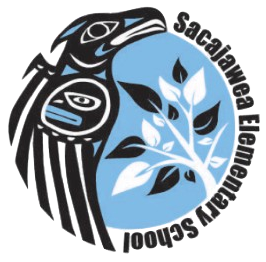BLM at School Year of Purpose: Louise B. Miller and BASL
/Dear Sacajawea Community,
Versión en Español
Public harassment can leave you feeling helpless and afraid whether you are a witness or the target. The organization Right To Be (formerly Hollaback!) offers free interactive trainings to teach you how to intervene safely to stop harassment. Parent Equity Team is encouraging Sac families to save the date for the Bystander Intervention to Stop Xenophobic Harassment workshop hosted by Right to Be on April 20 at 5:00 p.m. Sign up here: https://zoom.us/webinar/register/WN_cTRjIlvKR7Wft3xD6S-6UA.
Our goal is to participate as a community to learn the skills needed to safely stop hate crimes and harassment. Parent Equity Team will also be hosting a Sacajawea-specific community debrief session, so we can review and discuss what we have learned together—keep an eye out for more details!
Louise B. Miller: A force for educational equity
This month we are thinking about the ways many different identities can intersect in each of us. We are celebrating both Women’s History and Deaf History Month, and highlighting an early pioneer of school desegregation, Louise B. Miller. In 1952, Ms. Miller, a Black mother, grew frustrated that she had to send her three deaf sons to a school far away from their home in Washington, D.C. She filed suit in federal court against the D.C. Board of Education to end the segregation that kept Black deaf children from being educated within the district.
On July 3, 1952, the U.S. District Court for the District of Columbia ruled in her favor in Miller v. Board of Education of District of Columbia, stating that Black students could not be sent outside a state or district to obtain the same education that white students could have within the state or district. Louise’s victory is considered a precursor to the 1954 Supreme Court decision in Brown v. Board of Education of Topeka.
Deaf schools were segregated throughout the country for decades, leading to the development of Black American Sign Language (BASL), a dialect of American Sign Language (ASL). Even though the legal segregation of Deaf schools has ended, about 50% of Black deaf Americans use BASL today. Nakia Smith, a Black deaf woman, has created videos that show some of the differences between BASL and ASL, including a preference for two-handed variants of signs. A video of Nakia and her grandfather signing together went viral, and she has continued to create videos that highlight BASL and its evolving history.
What can you do to learn more?
Talk to your students about the info presented above.
If you have 2 minutes, read Black Deaf Culture Through the Lens of History
If you have 3 minutes, watch How To Sign In BASL (Black American Sign Language)
If you have 5 minutes (or more!), read BIPOC Deaf Women in History
If you have 8 minutes, watch Celebrating and preserving Black American Sign Language
Dig Deeper
National Black Deaf Advocates
Louise B. Miller Memorial Project
#Deafwoke Podcast
Check out these books
Black Deaf Lives Matter: A fun coloring & activity book about Black Deaf life, history, culture & sign language, by Lissa D. Ramirez-Stapleton
My Deaf Friend Can Do Anything You Can Do, by Tanesha Ausby
Books to deepen your understanding of Black and Black Deaf experiences
With gratitude,
Sacajawea’s Parent Racial Equity Team
equity@sacpta.org



